I learned two problems over the course of the last few days. One the flow of air needed to be laminar so that the fog could evenly be distributed to all of the tubes. And second the fog I was rather conductive and was slowly shorting out the electrostatic precipitator, particularly at the spot where the wire is suspended by a zip tie to the tube.
To address the laminar flow problem, I created some baffles and some air distribution pipes in the bottom bucket. This required splitting the air flow intake to two pipes and drilling a series of holes in the pipes so the air would go in all directions more evenly.
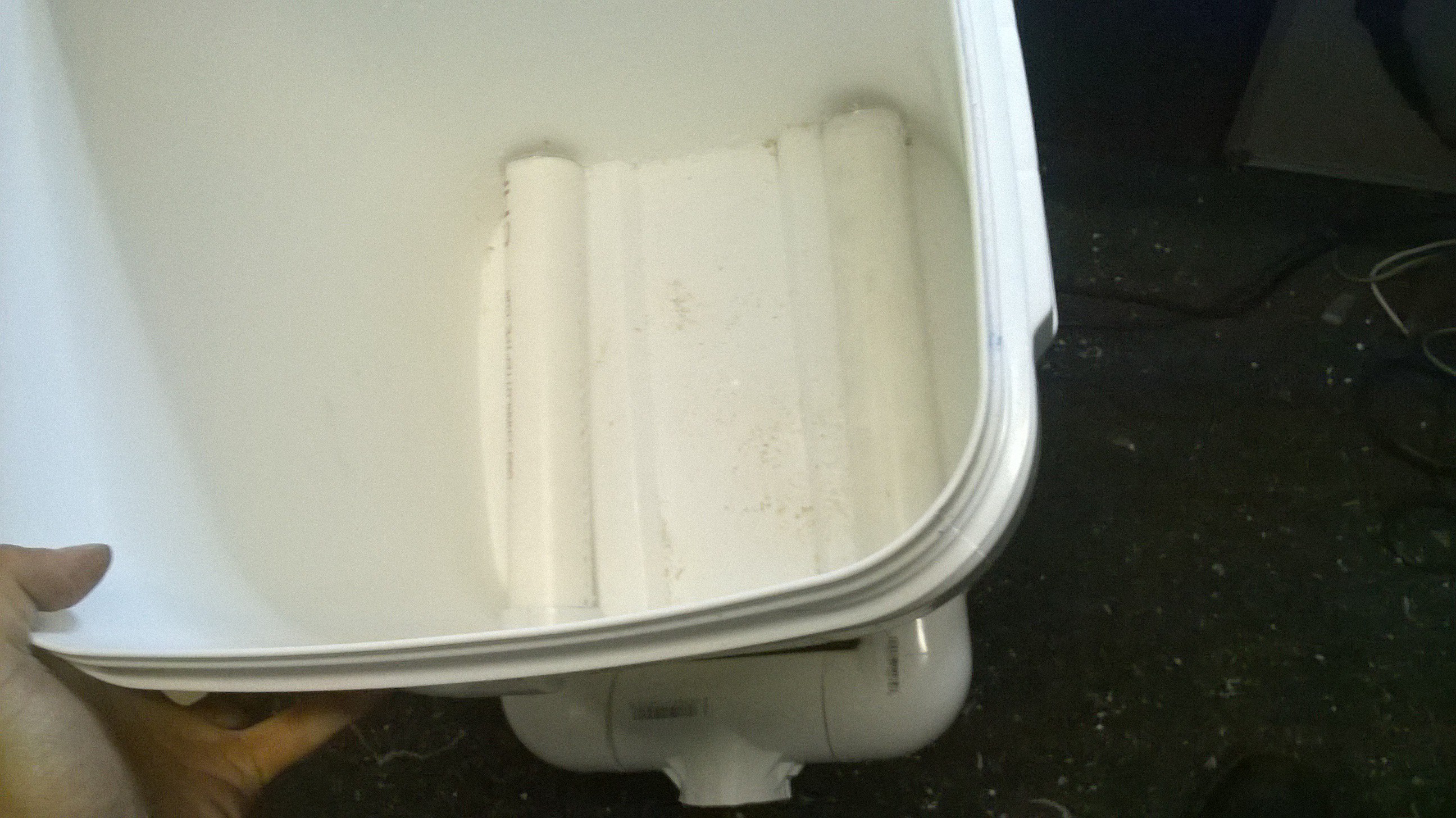 The holes were drilled so the air would enter on a horizontal plan then rise upwards.
The holes were drilled so the air would enter on a horizontal plan then rise upwards.
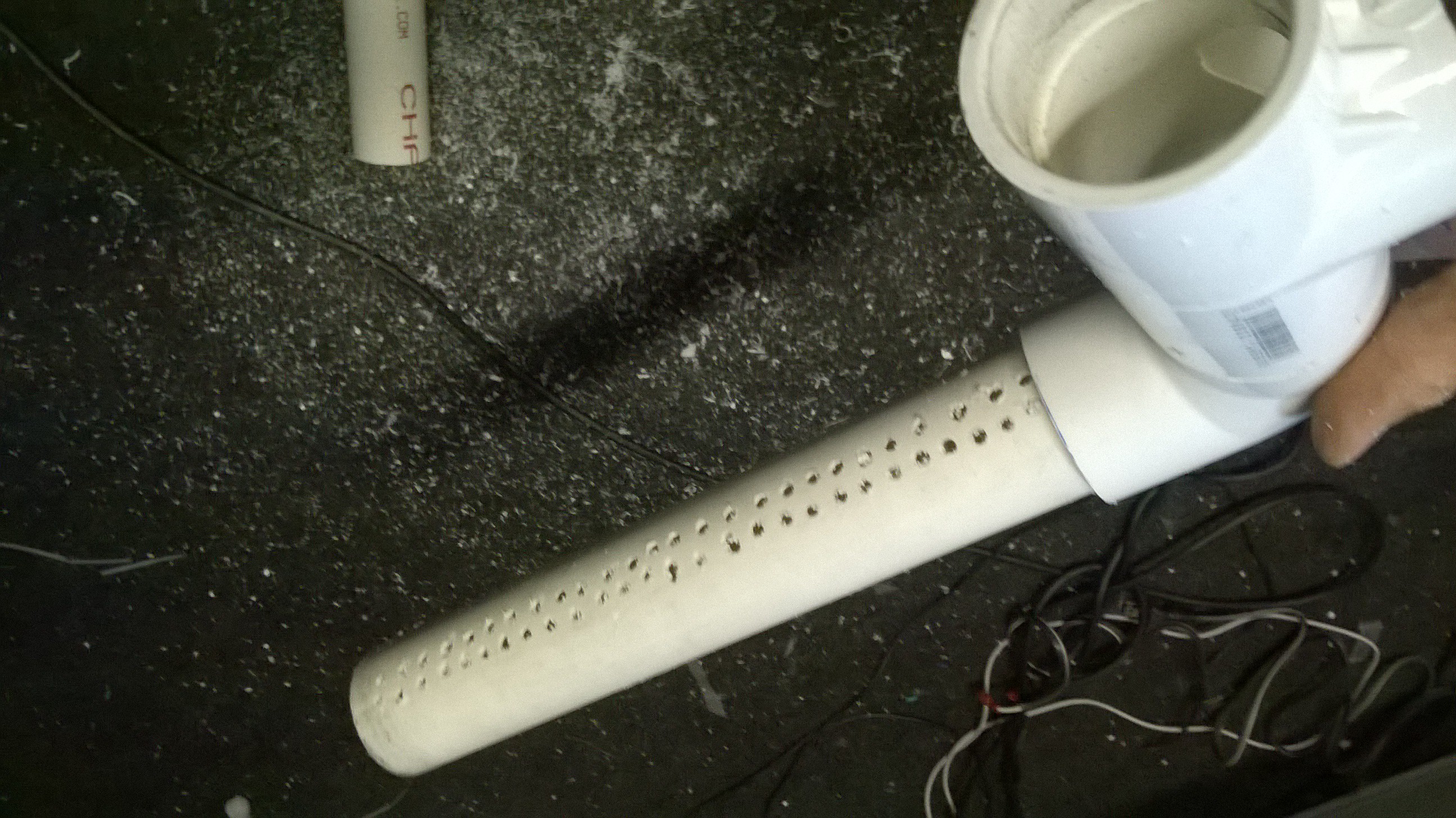
Then a series of grid like baffle was placed on top of the pipes to
distribute the air even more. I made this out of a styrofoam frame that was cut out of my styrofoam cooler I found in the dumpster. I then glued some plastic canvas grid sheets onto the top and bottom of the frame. 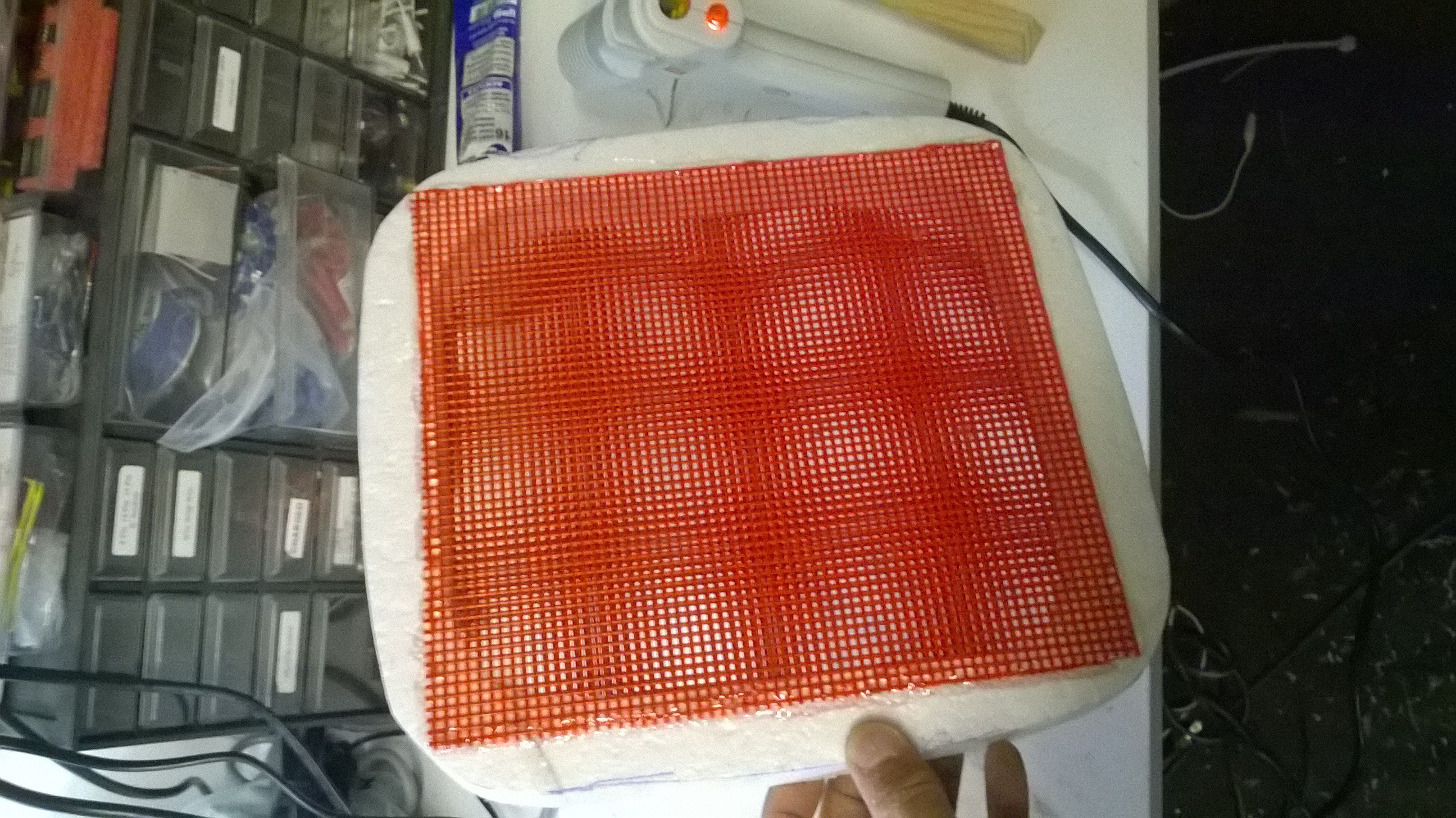 This created much more laminar flow
before the air even entered the tubes.
This created much more laminar flow
before the air even entered the tubes.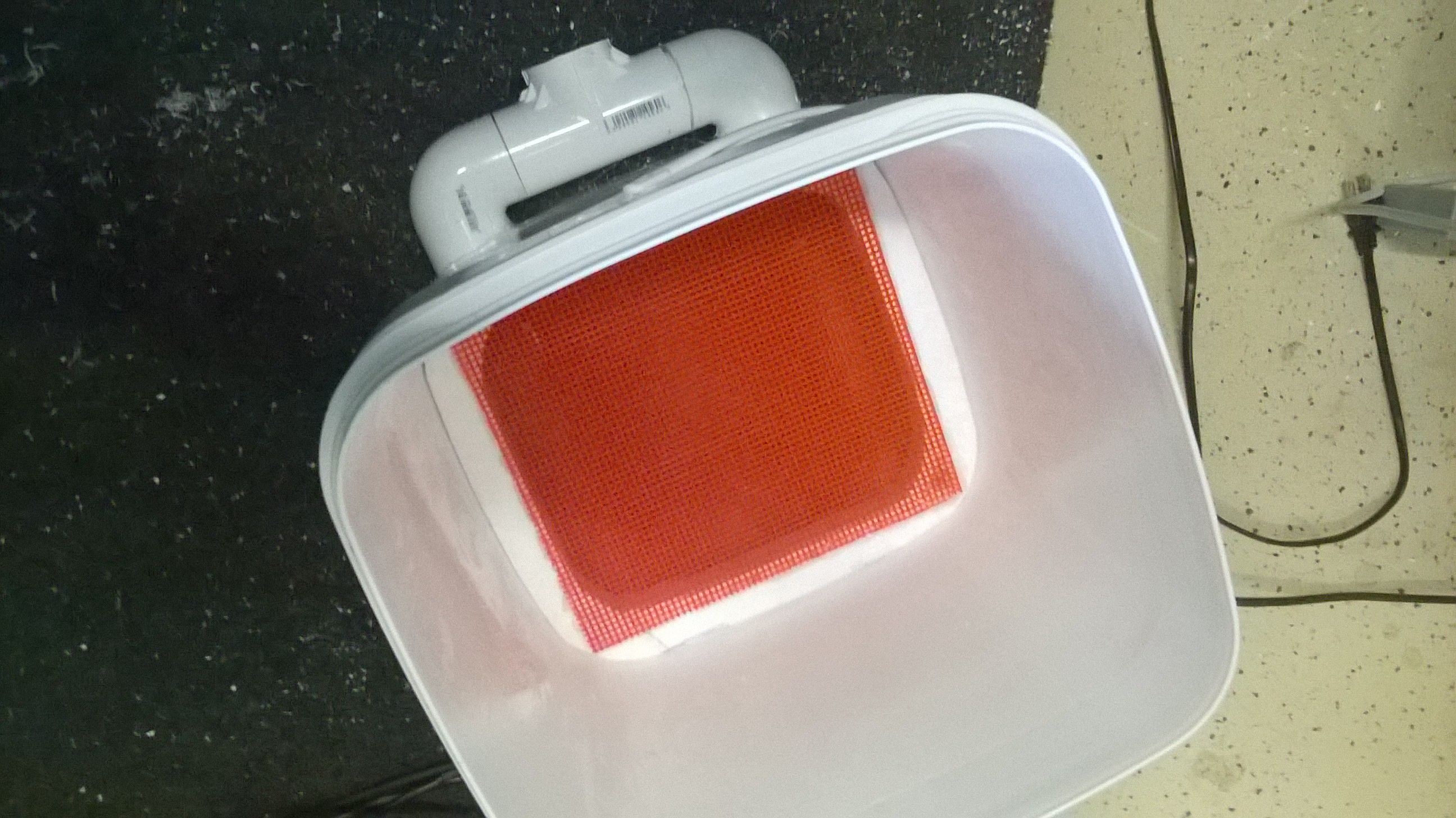
Concerning the shorting problem, I could measure a resistance between the central tube wire and the tube wall and this resistance would be reduced over each test I performed. I had to re-wire the entire back end cutting out all the zip ties which was a pain in the butt. I fixed this problem by adding more PVC pipe sections and suspending the central wire further from the tube walls using shish kabob skewers.
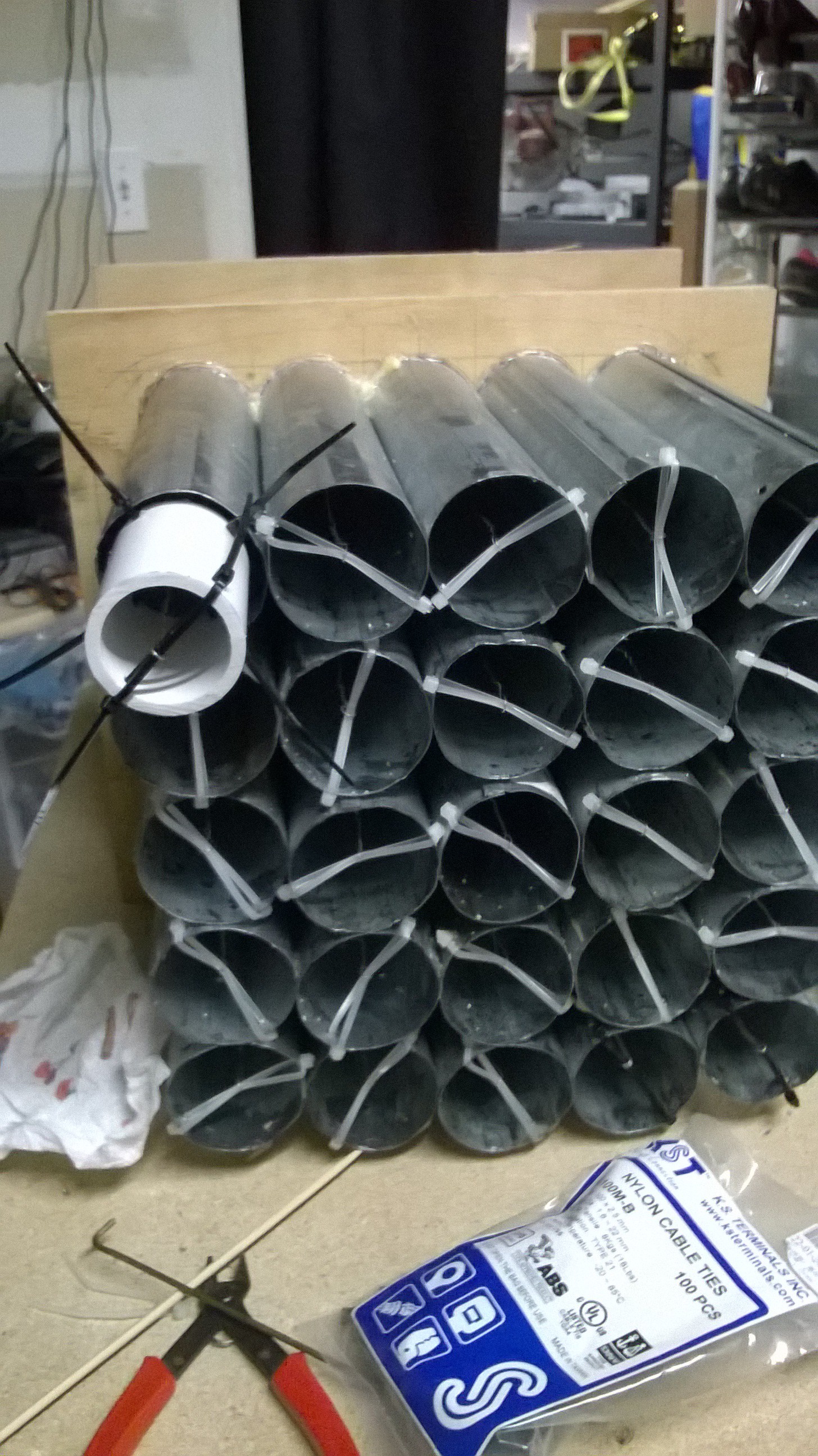 After rewiring it looked like this.
After rewiring it looked like this.
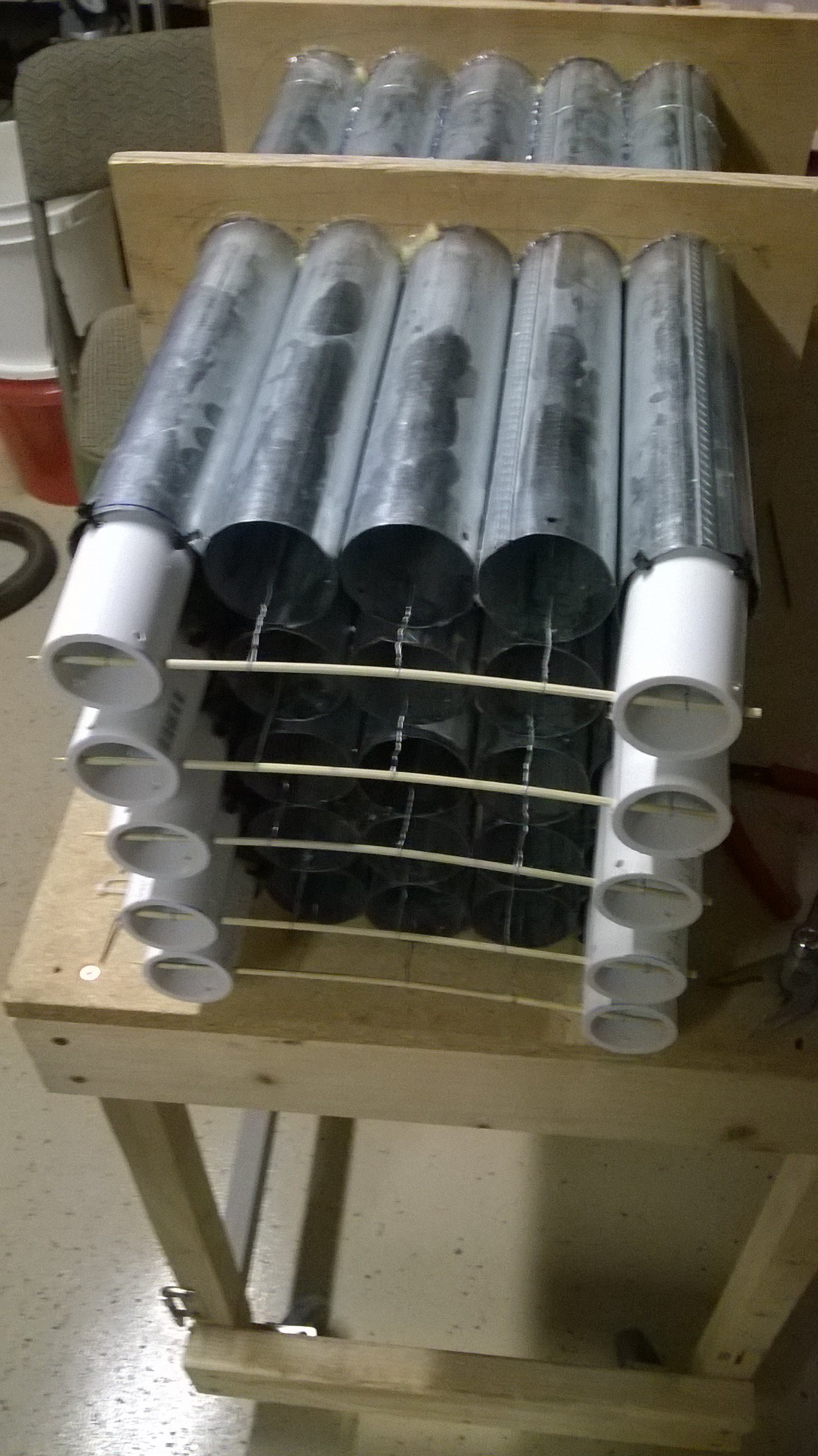
This would provide considerably more insulation as the electricity would have to travel from the tube wall, through the zip tie, to the length of the pipe and through a stick to get to the central wire. Indeed it worked!
I also noticed that I could pump more energy into the precipitator by running another high voltage circuit in parallel with my existing circuit. This required building another pair of dual polarity cockroft walton multipliers. I ended up using another microwave oven transformer just to keep everything isolated but I believe I simply could have ran the multiplier stages in parallel to the single microwave oven transformer.
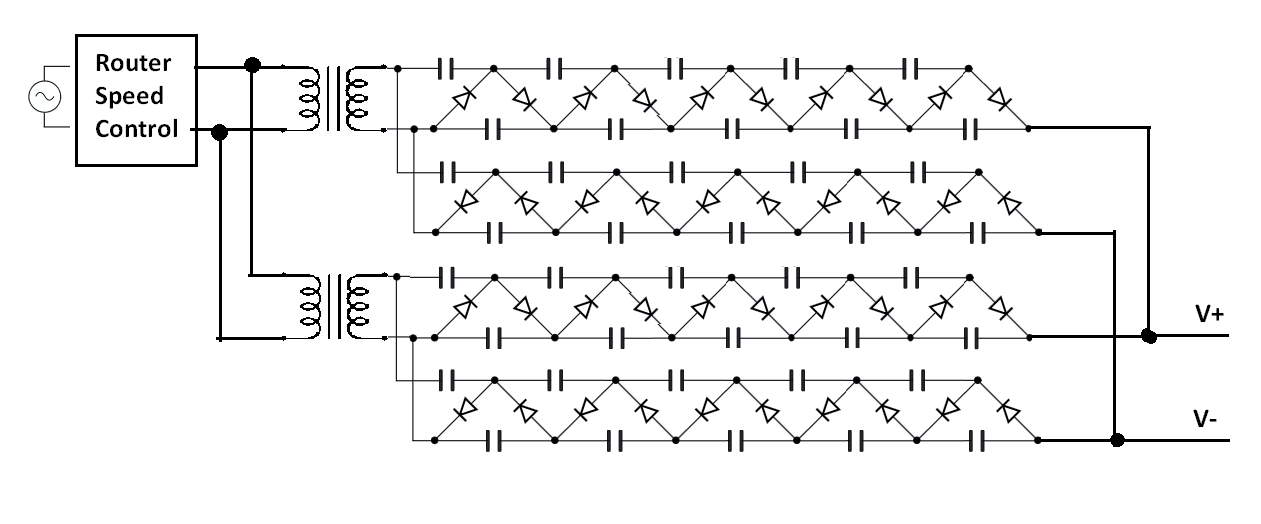
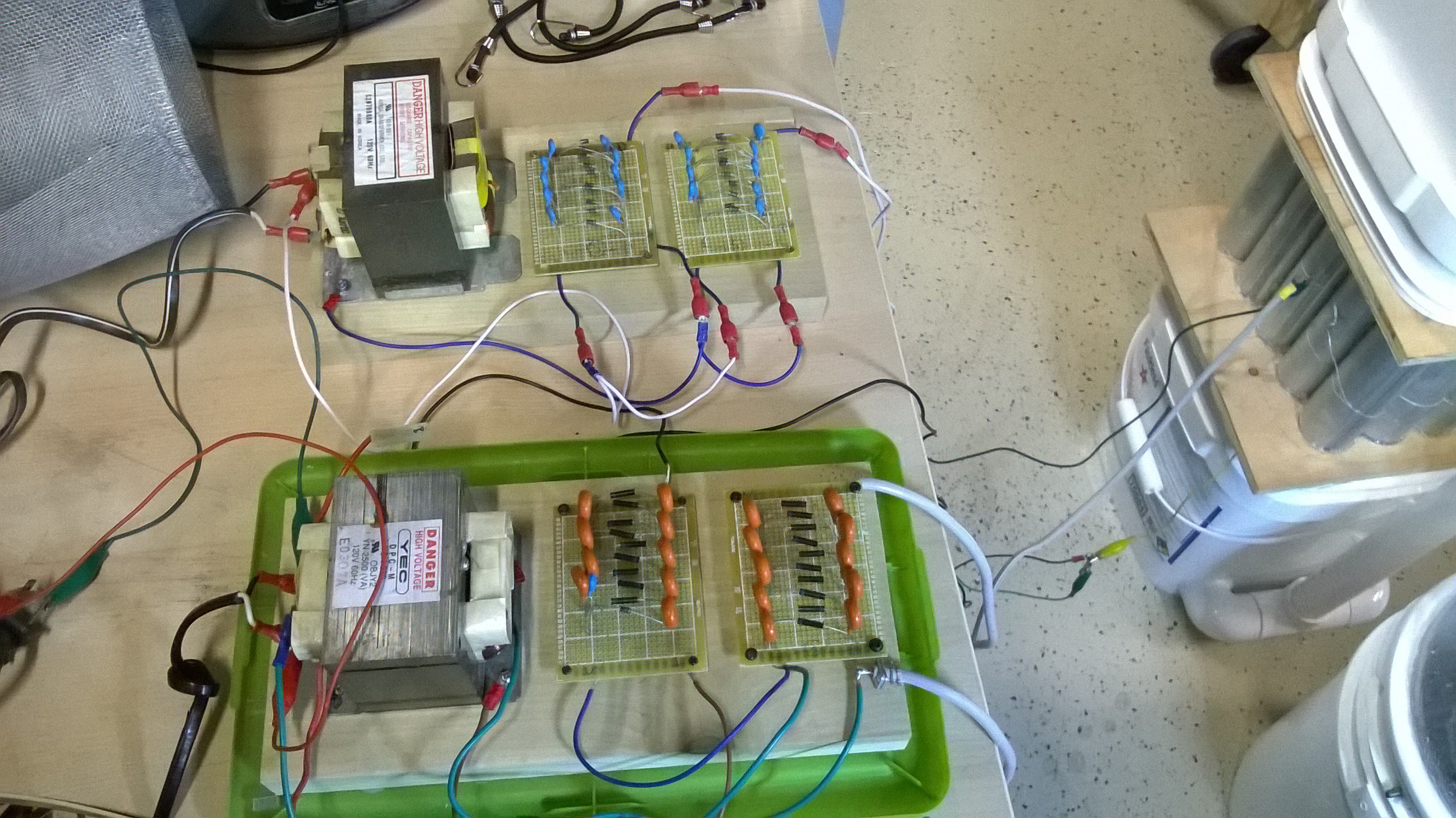
I still think I can go to an even higher voltage and current as ESP's want to operate just below the arcing point. Unfortunately my router speed control kept blowing fuses when I attached more stages in parallel.
Discussions
Become a Hackaday.io Member
Create an account to leave a comment. Already have an account? Log In.